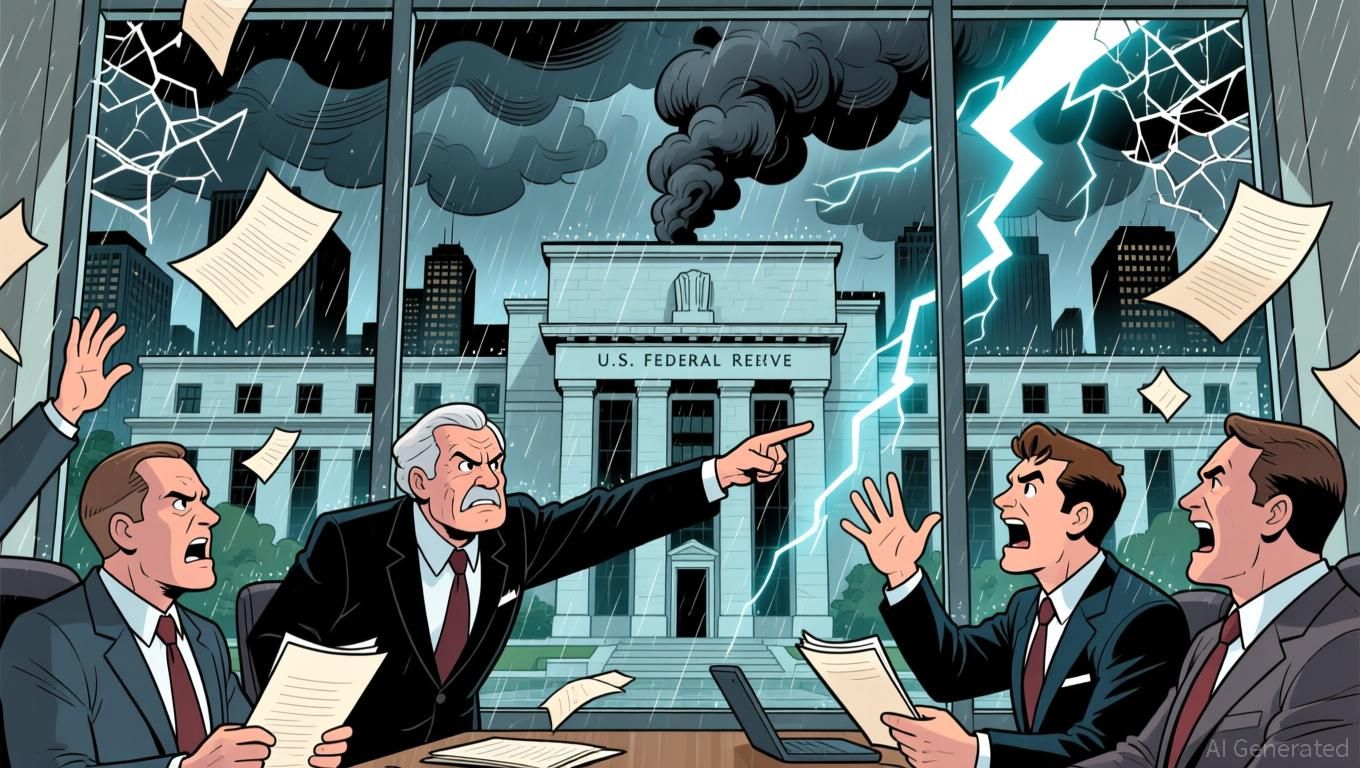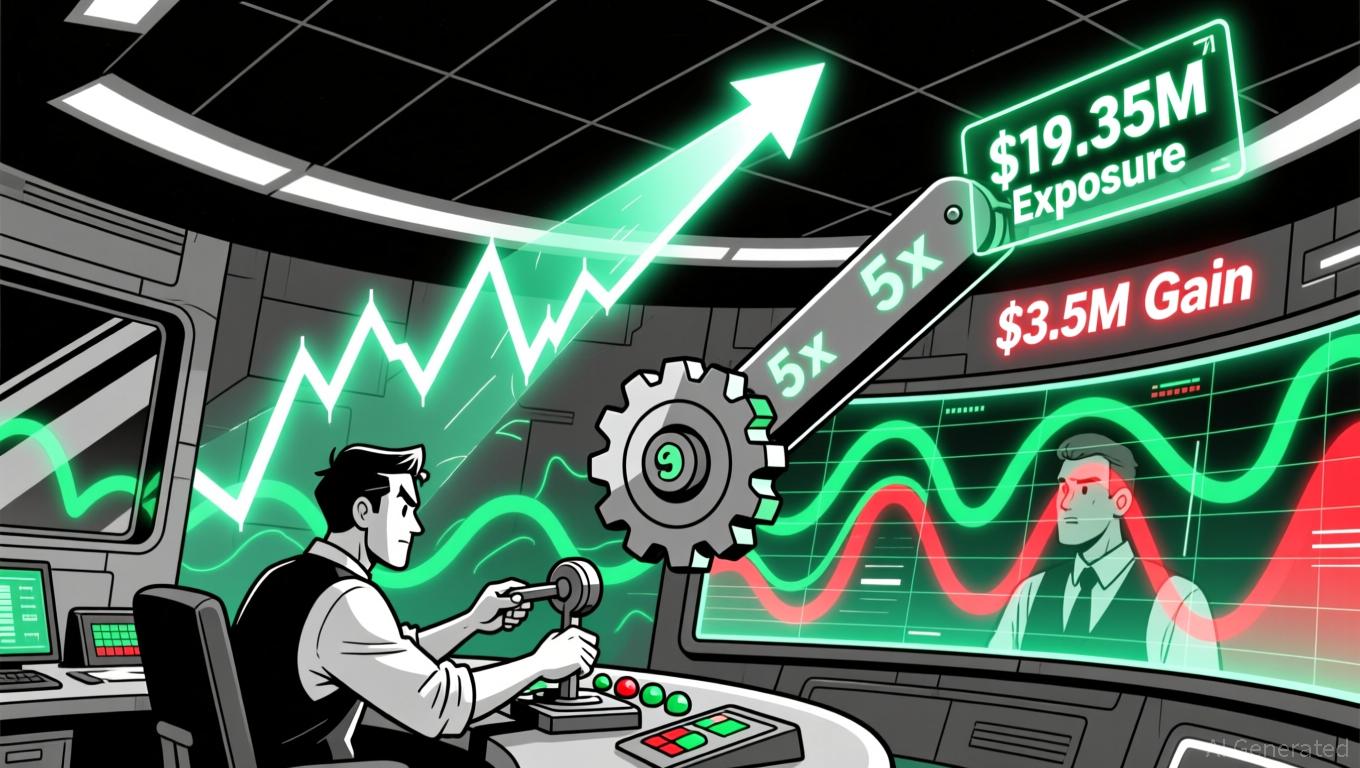Fed's Battle Between Inflation and Jobs Drops Chances of December Rate Cut to 33%
- Fed's December rate cut odds dropped to 33% due to internal divisions and delayed labor market data. - October/November jobs reports delayed until post-Dec 9-10 meeting, removing key policy input. - 10-2 October voting split and cautious officials like Collins highlight policy uncertainty. - Bitcoin fell 20% while gold dipped below $4,000 as markets react to reduced cut expectations. - Analysts warn prolonged indecision risks volatility, with December outcome hinging on incoming data.
The likelihood of the Federal Reserve lowering rates in December has sharply declined to 33%,
The U.S. Bureau of Labor Statistics’ move to delay the October and November employment reports until after the Fed’s December gathering has deprived policymakers of crucial information. The October jobs data was canceled due to a government shutdown, and the November figures won’t be released until December 16, after the FOMC’s meeting on December 9-10. Without these updates, officials lack timely insights into the labor market, a vital component of their mandate to manage both inflation and employment.
Debate within the Fed has added to the uncertainty.

Market movements have reflected the Fed’s indecision.
Gold, often considered a safe haven during market stress, has also come under pressure.
Experts caution that the Fed’s ongoing indecision could extend market turbulence. “The Fed’s challenge in juggling inflation and employment is creating a climate of uncertainty,” one strategist observed, noting that the central bank’s dual objectives are increasingly in conflict.
Looking forward, the outcome of the December meeting will depend on new data and further signals from the Fed. Should officials decide to keep rates unchanged, the “higher-for-longer” scenario may persist, raising borrowing costs for both households and companies. On the other hand, a 25-basis-point cut would mark a cautious shift toward a more supportive policy, potentially lifting stocks and easing strain on the housing market.
As the Fed faces these pivotal decisions, markets are adopting a wait-and-see approach, closely watching the December meeting and the return of key economic indicators.
Disclaimer: The content of this article solely reflects the author's opinion and does not represent the platform in any capacity. This article is not intended to serve as a reference for making investment decisions.
You may also like
Vitalik Buterin Backs ZKsync: Accelerating Ethereum’s Expansion and Advancing Layer 2 Solutions
- Vitalik Buterin endorses ZKsync's Atlas upgrade, highlighting 15,000 TPS, $0.01 fees, and bridging Ethereum's Layer 1/2 liquidity. - ZK Stack innovation reduces capital fragmentation while Airbender prover enables 2-GPU L1 block proofs, advancing Ethereum's scalability. - ZKsync now holds 15% Layer 2 TVL with 50% ZK token surge, but faces 60x performance gaps and competition from Arbitrum/Optimism. - Upcoming Fusaka upgrade targets 30,000 TPS by December 2025, while Kohaku privacy framework addresses ado
Investment Prospects in Layer 2 ZK Technologies After the ZK Atlas Enhancement
- ZK Atlas Upgrade (Oct 2025) boosts blockchain scalability via modular ZK solutions, enabling 15,000–43,000 TPS with $0.0001 per transaction costs. - Ethereum gas fees dropped 90%, TVL in ZK rollups hit $3.5B by 2025, with Deutsche Bank adopting ZK-rollups for institutional settlements. - Deflationary tokenomics drive capital efficiency: buybacks, burns, and staking rewards attract institutions, supported by $15B in Bitcoin ETF investments. - Analysts project 60.7% CAGR for ZK Layer-2 solutions, reaching
ZEC rises 6.32% in 24 hours as Hyperliquid holds a $19.35M long position
- ZEC surged 6.32% in 24 hours to $538.2 on Nov 22, 2025, despite a 9.7% weekly drop, with 36.25% monthly and 879.76% annual gains. - A $19.35M ZEC long position on Hyperliquid (5x leverage) shows $3.5M unrealized gains, highlighting institutional bullishness amid price volatility. - The leveraged position underscores amplified risks/rewards, with narrowing gains signaling market uncertainty and the need for cautious monitoring of macroeconomic/on-chain trends.

Bitcoin Updates: Billions Flow Out of Bitcoin ETFs While Stablecoins Strengthen as Core of Finance
- BlackRock's IBIT Bitcoin ETF recorded a record $523M outflow, pushing November's total U.S. spot Bitcoin ETF redemptions to $2.96B amid Bitcoin's 30% price drop. - Analysts link the exodus to weak fundamentals and macroeconomic uncertainty, with ETF outflows and long-term holder sales tightening liquidity and eroding investor confidence. - BlackRock filed for an Ethereum staking ETF as stablecoins surge in cross-border finance, processing $9T in 2025 payments while Bitcoin ETFs face sustained outflows an
